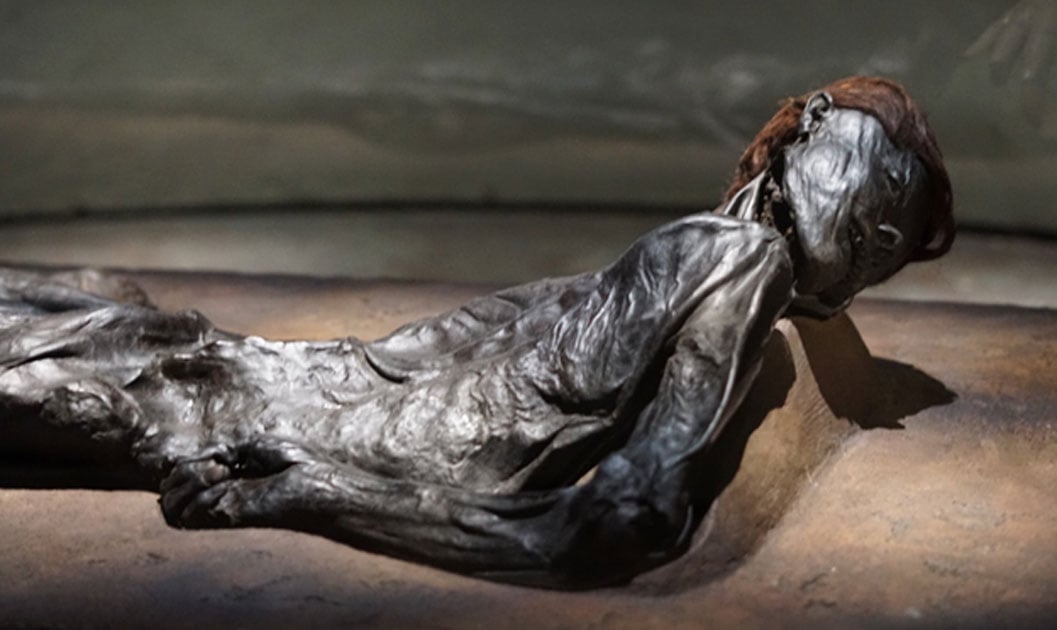What Killed Grauballe Man? Explaining the Puzzle of the Iron Age Bog Body
Grauballe Man is the name given to a bog body that was discovered in Denmark during the 20 th century. Initially, it was thought that the bog body belonged to a local peat cutter who mysteriously vanished during the last century. When Grauballe Man was scientifically examined, however, it was found that he was from the much more distant past. These analyses also provided important information about Grauballe Man’s life and death.
The Discovery of Grauballe Man
On the 26 th of April 1952, a group of peat cutters were working in the Nebelgaard Bog in Central Jutland, Denmark, when one of them stumbled upon a bog body. The peat cutter, Tage Busk Sørensen, stuck his shovel in something that was not peat. Upon further digging and examination, a human head was identified, and the peat cutters alerted the local doctor. Suspecting that this was a bog body, the doctor contacted Peter Glob from the Prehistory Museum at Aarhus to have a look at the body. As the bog is located near the village of Grauballe, the body was dubbed Grauballe Man.
- Star-Crossed Lovers? Criminals? Or Strangers? The Mystery of the Windeby Bog Bodies
- Mixing Magic and Medicine: New Study Shows Mesopotamian Doctors Had to Battle Demons
- The Surprising and Iconic Bronze Age Egtved Girl: Teenage Remains Tell a Story of Trade and Travel

The body of the Grauballe Man upon his discovery. (Gourami Watcher / Public Domain)
Initially, it was speculated that the body belonged to Red Christian, a local peat cutter who mysteriously disappeared in the area in 1887. It was assumed that he was drunk and fell into the bog, as was the case of the two Englishmen who had to too much to drink and fell to their deaths in the Lindow Moss in 1853. In any case, Grauballe Man was sent to the Prehistory Museum at Aarhus to be studied.
The Condition of Grauballe Man’s Body
When Grauballe Man was discovered, a quick visual examination at the site revealed that he was completely naked and that he had no belongings with him. His strikingly red hair was also noted. This, however, was not the natural color of Grauballe Man’s hair when he lived, but the result of his immersion in the bog. Further examination at the museum revealed that he was about 30 years old at the time of his death, had a height of 5 feet, 9 inches (1.75 meters), and that his hands and fingers were smooth and showed no signs of manual labor.

The well preserved hand of Grauballe Man. (Sven Rosborn / Public Domain)
In addition to the visual analysis of Grauballe Man, several scientific analyses were also undertaken. One of them was radiocarbon dating, which was used to determine Grauballe Man’s age. The results showed that Grauballe Man lived at some point of time between 310 and 55 BC during the Germanic Iron Age, effectively ruling out the possibility of him being Red Christian.
Another analysis that was done was the examination of Grauballe Man’s stomach contents in order to obtain information about what he ate before he died. This was undertaken using a scanning electron microscope, and the results showed that Grauballe Man’s last meal consisted of a porridge made of corn, seeds from 60 different herbs, and grasses containing traces of a poisonous fungus called ergot.
What Killed Grauballe Man?
Researchers speculate that the fungus was ingested naturally and made Grauballe Man sick. His sickness would have made him incapable of work and caused painful symptoms, including convulsions, hallucinations, and burning of the mouth, feet and hands. It is possible that he was regarded by his neighbors as being possessed by an evil spirit, which could have led eventually to his execution and deposition in a bog.

The face of the Grauballe Man. (Yerpo / CC BY-SA 3.0)
Alternatively, it is also possible that he was a criminal who was punished by death or that he was a sacrificial victim. The hypotheses find support in the writings of the Roman historian Tacitus, though the lack of manual labor done by Grauballe Man makes the second hypothesis more plausible.
Although we may not be certain about the exact cause leading to Grauballe Man’s death, it is clear that he was killed by having his throat slit. Fractures were also found on his skull and right tibia. Although these were thought to have been caused by blows from a blunt weapon, a later re-assessment determined that it was in fact caused by pressure in the peat bog.
Today, Grauballe Man is housed in the Moesgaard Museum in Aarhus and is one of its main attractions. He is exhibited in a room protected from light and temperature changes, so as to maintain his excellent state of preservation. Moreover, the room was designed in such a way as to allow visitors to experience how it is like to be in a peat bog.

Facial reconstruction of the Grauballe Man's face. (Gourami Watcher / CC BY-SA 3.0)
Top image: The Grauballe Man is a bog body that was uncovered in 1952 from a peat bog near the village of Grauballe in Jutland, Denmark. Source: Insights Unspoken / CC BY-SA 2.0.
By Wu Mingren
References
Hirst, K. K., 2018. Grauballe Man (Denmark) - European Iron Age Bog Body. [Online] Available at: https://www.thoughtco.com/grauballe-man-denmark-bog-body-171107
humanremainsfromthhdawnofhistory.weebly.com, 2019. Grauballe Man. [Online] Available at: https://humanremainsfromthhdawnofhistory.weebly.com/grauballe-man.html
Moesgaard Museum, 2019. Grauballe Man. [Online] Available at: https://www.moesgaardmuseum.dk/en/exhibitions/permanent-exhibitions/grauballe-man/
nematode.unl.edu, 2019. Grauballe Man. [Online] Available at: https://nematode.unl.edu/fensgrauballe.htm
ronin, 2019. Grauballe Man. [Online] Available at: https://www.atlasobscura.com/places/grauballe-man
www.visitaarhus.com, 2019. The Grauballe Man. [Online] Available at: https://www.visitaarhus.com/ln-int/grauballe-man-gdk943056




















Comments
I assume that when the article states that corn was found in his stomach, this the old use of the word as a synonym for grain, and not describing the maize plant indigenous to the Americas being found in an Iron Age European stomach. Otherwise this would be an even more interesting find.